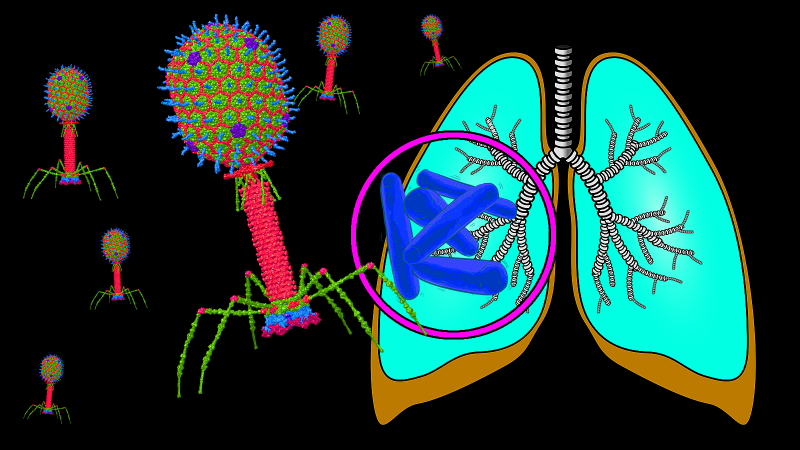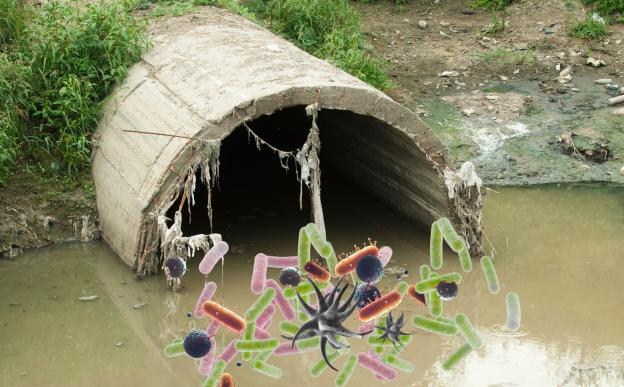
Viruses are infamous for the infectious diseases they cause in different organisms — the year 2020 has proved it for us to see. But, a virus that causes an infection in one organism could be harmless in another. The Nipah virus, for example, is harmless in bats but causes a deadly disease in humans. Likewise, there are a group of viruses called bacteriophages that infect and kill bacteria but are generally harmless in humans. Within this group of viruses are myriad individuals, each one specific to certain bacteria.
In a recent study, researchers from the Indian Institute of Science (IISc), Bengaluru, have found that a cocktail of bacteriophages could kill Mycobacterium tuberculosis – the bacteria that causes Tuberculosis (TB), and its cousin Mycobacterium smegmatis. The study was led by Rachit Agarwal, Assistant Professor at the Centre for BioSystems Science and Engineering, IISc, and the findings were published in the journal Frontiers in Microbiology.
Tuberculosis (TB) is one of the top 10 causes of death worldwide. It affected 10 million people and killed 1.4 million of them last year. India has the highest burden of TB worldwide, with nearly 4.5 lakh deaths reported in 2018. When M. tuberculosis infects a person, their immune system launches an attack against it. A group of immune cells, called macrophages, engulf the bacteria to form a packet inside the cell containing the bacteria with a slightly acidic environment. Typically, this packet would fuse with another component inside the cell, called the lysosome, which would make the environment more acidic and thereby kill the bacteria.
However, M. tuberculosis and its relatives have a smart way of escaping this process. They not only block this process of creating a more acidic environment, but they also thrive in an acidic environment and in low-oxygen conditions where other cells would die! They switch to a state in which they do not multiply fast, but grow slowly, residing inside these acidic compartments made by the body’s immune system.
Doctors treat tuberculosis with a combination of drugs that includes antibiotics. Over the years, the indiscriminate use of antibiotics has led the bacteria to develop resistance to these drugs, resulting in antibiotic-resistant tuberculosis infection. India also has the highest burden of such infections.
“The main motivation behind our study was the fact that antibiotic-resistance has been on the rise and is predicted to be a major global health crisis soon,” says Yeswanth C Kalapala, the lead author of the study.
In recent years, researchers have explored the use of bacteriophages against tuberculosis bacteria to curb their growth and kill them. The current study is no different. The researchers have studied how bacteriophages work against Mycobacterium in various disease-mimicking environments.
“We found that these bacteriophages were effective against Mycobacterium in various disease-mimicking conditions like acidic environment, low oxygen concentration and nutrient starvation,” says Rachit.
The researchers first studied the effect of single bacteriophage on the growth of Mycobacterium and later used a mixture of them — five different bacteriophages against M. smegmatis, and three against M. tuberculosis — in their lab.
“The bacteria develop some resistance against individual phages over time, but a cocktail of phages inhibit the growth of the bacteria for a longer time and delay the development of tolerance to phages,” explains Pallavi R Sharma, one of the authors of the study.
The researchers found that the cocktail was effective in acidic environments, low-oxygen and low-nutrition conditions — all of which are present in cells infected with tuberculosis. It was also working against slow-growing bacteria. They then used the cocktail in combination with rifampicin, an antibiotic conventionally used to treat TB, on lab-grown bacteria. They found that the combination had a synergistic effect in reducing the growth when compared to the using either one separately.
As TB cases caused by antibiotic-resistant bacteria are on the rise, the authors also looked into the effect of the phage cocktail on an antibiotic-resistant strain of M. smegmatis. M. smegmatis generally do not cause a disease, but behave similar to other Mycobacteria. This allows researchers to use this bacteria in laboratory conditions where safety requirements are lesser than those for the use of M. tuberculosis, while giving them an idea of how M. tuberculosis might behave in similar conditions. Besides, M. smegmatis reproduce faster than M. tuberculosis. So, the authors used the antibiotic resistant M. smegmatis as a model to study how other antibiotic resistant Mycobacteria react to phage cocktails.
“We found that the five-phage cocktail was effective in infecting and killing antibiotic-resistant M. smegmatis. We also saw that the phage cocktail complemented rifampicin and eliminated the bacteria that were resistant to it,” says Yeswanth.
Following these interesting observations, the researchers are planning to study the effect of these phage cocktails on Mycobacterium tuberculosis growing inside human cells cultured in the lab and animal models like mice.
“We wish to see how this therapy can be used in animals and later translated to humans to treat TB, particularly in the case of drug-resistant TB,” signs off Rachit.
This article has been run past the researchers, whose work is covered, to ensure accuracy.
Editor's Note: One of the quotes has been slightly modified to reflect accuracy, based on the researcher's request.

























